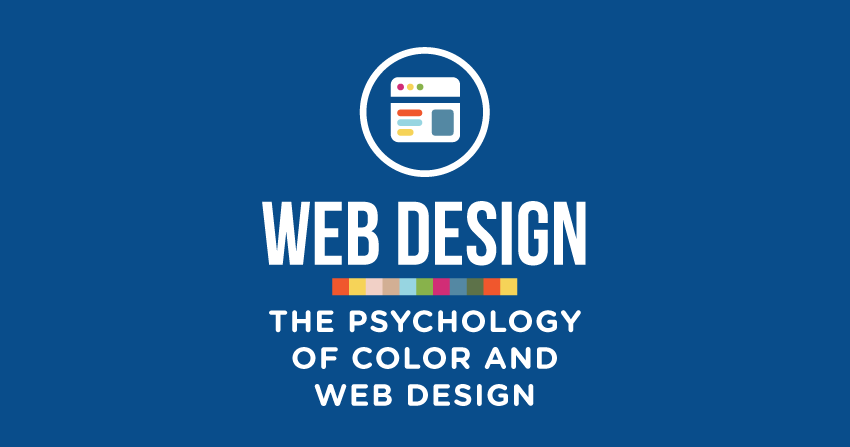CERN, the first-ever website, went live in 1992. Back then, the most exciting part about it was the fact that it went live, and not much else. It was a 100% text-based page, and the only splash of color it had been the default blue hypertext.
Websites have come a long way since then.
Today, the World Wide Web has nearly two billion websites. Most of them are decked in a variety of color schemes that make them visually stunning.
Making a website look good, however, is hardly the only reason website designers use specific colors in their work. Aesthetics may be a primary concern, but colors in web design do more than just make a website look pretty. They also happen to have the power to impact how we think, feel, and act. At least that’s what proponents of the psychology of color are saying.
What Is Psychology of Color?
Color psychology is regarded as a branch of behavioral psychology that studies how color affects human behavior. Colors, in theory, have specific human emotions, attitudes, and values associated with them. According to color psychology, humans are expected to respond a certain way upon seeing a particular color. By understanding these links that color psychology makes, one can draw certain desired reactions and actions from others.
That makes color a powerful design tool, something which seasoned web designers know and are already applying to their work.
So, which colors in a website are supposed to elicit what response among users? Let’s take a look at several colors and see what color psychology says are the emotions, values, and attitudes attached to them.
Blue
There’s a reason many regard blue as the most calming color of all. One only needs to look at the blue skies and ocean to feel a certain amount of serenity inside. Some even claim that people’s blood pressures and heart rates drop upon seeing something blue. It doesn’t hurt that blue is easy on the eyes, too. As far as most people are concerned, blue is the coolest color, literally and figuratively.
Blue also gives a feeling of safety and security. There is a link between blue and intelligence, reliability, trust, and stability as well. These very characteristics make blue a common choice for health care, medical, dental, high-tech, legal, science, utilities, and government websites.
Blue, however, is not without its negative connotations. In the English language, the word “blue” is synonymous with “sad.” It is also said that the sight of too much blue can give rise to feelings of melancholy, self-centeredness, and self-righteousness.
Yellow
Yellow is the color of sunshine, which automatically makes it the warmest color. Just like the sun, yellow can be incredibly stimulating. It’s one of the best colors for creating a sense of warmth, cheerfulness, and optimism in people. Some people even claim that seeing yellow makes them feel a bit younger.
The sense of cheerfulness in anything yellow makes it ideal for websites that sell or promote anything geared towards children. Many other types of businesses use yellow, though, mainly because of its ability to grab attention.
For all the warmth and comfort that it offers, overusing yellow can be somewhat overwhelming, even unsettling for some. It can also be quite tricky to combine with other colors.
Red
In many cultures, red is known as the color of love. It also happens to be associated with hatred, violence, aggressiveness, jealousy, or any feelings of passion.
Red, however, is just as great as yellow at turning people’s heads, maybe even better.
Of all the colors, red is excellent for creating a sense of urgency. The frequent use of red in ads—online or otherwise—for clearance sales attests to its power.
A clearance sale ad with a bright red background does grab attention. It also makes us want to go avail of what’s being advertised. If we don’t, we
might miss out on the offer, especially when it’s of the limited time kind.
The ability of red to grab attention makes it the most commonly-used color for CTAs as well. Countless businesses and organizations use red in their websites and other marketing materials.
Orange
Orange is a combination of the colors red and yellow and carries many of the traits associated with both.
Like yellow, orange comes across as cheerful and warm, which makes it right for children’s products, too. It can also prove useful in attracting the attention of people just like yellow and red. Orange, however, is very much like red when creating a sense of urgency. Whether you’re asking people to subscribe to or buy something, orange is an excellent color to use in spurring them to action. Look at the CTA buttons of websites, and you will see that many of them are either red or orange.
Green
Green has several things in common with blue. It’s easy on the eyes, for one thing. The human brain, in fact, finds it easy to process green. Like blue, it also promotes calmness, relaxation, and serenity, for another.
Green’s strongest link, however, is with the environment, with which it has become synonymous. Organizations related to conservation, sustainability, ecology, and just about anything environment-related typically use green for their websites, ads, and any material they produce.
Green is also associated with decisiveness, which it encourages by balancing emotions. It’s regarded as a symbol of fertility as well.
Purple
Purple, which isn’t too common in nature, is a combination of blue and red. The color symbolizes royalty, wealth, power, and luxury. It’s an association that dates back to ancient times when creating a purple dye for fabrics took a lot of effort and expense.
Color psychology also associates creativity, wisdom, respect, independence, dignity, mystery, and even magic with purple.
For some reason, purple is generally disliked by men, but women tend to like it. Purple is often perceived as a more feminine color. This is probably the reason purple is the official color of International Women’s Day.
Pink
Pink is another color that is closely associated with femininity. While essentially a light hue of red, pink is thought to have a calming effect. Aside from being a relaxing color, pink is also associated with softness, kindness, and love.
White
In many cultures, white is generally seen as a symbol of purity, virtue, and innocence. It may also represent a new beginning, as in wiping the slate clean.
When it comes to cleanliness, no other color represents it better than white. The clean and sanitary appearance of white is why most medical professionals wear white uniforms. Hospital facilities and medical facilities, in general, are also more inclined to use white sheets.
For websites, it’s the best color for accenting other colors on its pages.
Black
Black generally gets a bad rap among all the colors. After all, it’s the one color used as a representation of darkness, and all the gloom and doom that comes with it. In the western world, at least, people wear black at funerals. A funny movie, TV show, or novel that features numerous characters dying is called a black comedy. Evil characters are often depicted wearing black.
Still, marketers often use black for materials that promote luxury products, especially in glossy magazines. Black may be the darkest of colors, but it’s quite a sophisticated one. The way black exudes elegance, glamour, beauty, and power makes it a popular color for ads and websites for fashion products and cosmetics. Black is also great when paired with white text, set against a minimalist layout.
Choosing Colors for Web Design
For all the behavioral associations the psychology of color makes, it’s clear that most, if not all, of them are quite generalized. Individuals, after all, respond to colors differently. These responses often depend on one’s personal preferences, cultural upbringing, life experiences, and a host of other factors.
Nevertheless, the general nature of the principles of color psychology does not mean they’re not useful. In fact, they provide web designers with a clearer idea of how human beings usually react to colors.
If you’re a web designer and you’re choosing a color for your project, you would do well to use color psychology as a general guide. However, you also must have a clear understanding of your audience.
Consider factors like age, gender, and culture when doing your research. That way, you can be sure that the colors you choose will elicit the responses you want and need from them. Fail to do this, and you risk reactions from your audience that are not what you intended to draw.
Creating a successful website hinges on many factors, and choosing an appropriate color scheme is one of them. The psychology of color reveals enough about human behavior in relation to colors to help you make the right decision. Combine that knowledge with research and a little A/B testing, you should be able to find out the right color combination to which your audience responds positively.



